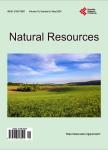Patterns of Genetic Diversity of the White-Nosed Coati Reveals Phylogeographically Structured Subpopulations in Mexico
Patterns of Genetic Diversity of the White-Nosed Coati Reveals Phylogeographically Structured Subpopulations in Mexico作者机构:Laboratorio de Bioconservación y Manejo Posgrado en Ciencias Quimicobiológicas Escuela Nacional de Ciencias Biológicas Instituto Politécnico Nacional Prolongación de Carpio y Plan de Ayala s/n Mexico City México Laboratorio de Genética Posgrado en Ciencias Quimicobiológicas Escuela Nacional de Ciencias Biológicas Instituto Politécnico Nacional Prolongación de Carpio y Plan de Ayala s/n Mexico City México Centro de Investigación en Biodiversidad y Conservación (CIByC) Universidad Autónoma del Estado de Morelos Cuernavaca México Center for Conservation Genomics Smithsonian Conservation Biology Institute National Zoological Park Washington DC USA
出 版 物:《Natural Resources》 (自然资源(英文))
年 卷 期:2017年第8卷第1期
页 面:31-53页
学科分类:1002[医学-临床医学] 100214[医学-肿瘤学] 10[医学]
主 题:Alleles Cytochrome b Heterozygosity Microsatellites Nasua narica Procyonids
摘 要:Coatis (Procyonidae;Nasua) are considered the only truly social meso-carnivore mammals in Neotropical forests. In Mexico, white-nosed coatis (Nasua narica) are suspected to have undergone population reduction due to habitat loss and fragmentation and led to a lack of genetic adaptability and genetic isolation throughout its range. We examined patterns of genetic diversity and connectivity of five populations of Nasua narica distributed throughout Mexico (n = 60) by sequencing an ≈ 800 bp fragment of the mitochondrial cytochrome-b gene and also by screening 12 microsatellite loci. We found moderate to high levels of genetic variability for both genetic markers. We recorded twenty-two different cytochrome-b haplotypes throughout the 5 sampled areas and found that each of the sampled population of white-nosed coatis in Mexico harbors unique haplotypes and only three haplotypes were shared among two different populations that were closer geographically. All populations had high haplotype diversity (h) (0.968 ± 0.008 (SD)) but lower levels of nucleotide diversity (π) of 0.007 ± 0.001 (SD). All microsatellite loci were polymorphic in all of the populations and the mean number of alleles per locus was 5.033 ± 1.545 (SD) with expected (HE) and observed (HO) heterozygosity values of 0.774 and 0.664, respectively. However, low Wright F statistic values suggest the existence of a reduced heterozygosity (FST = 0.203, FIS = 0.134 and FIT = 0.310). Significant differences between the five populations confirmed isolation by distance, which suggests genetic structure among five subpopulations.



